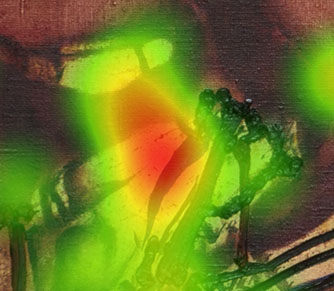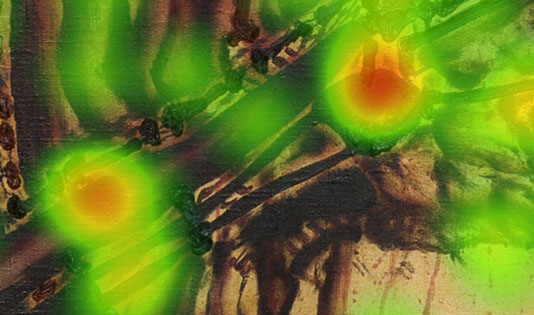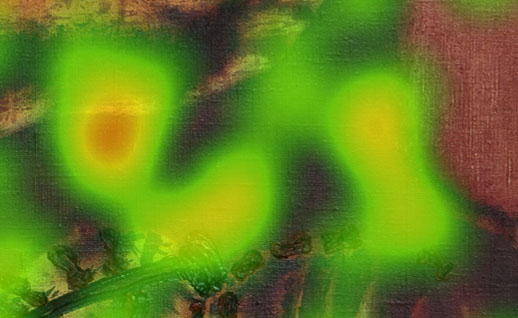
1966, oil on canvas, 131 cm x 251 cm,
average looking time: 19,22 sec.
I wish I could always paint with the same tension like when someone goes through their deepest despair or happiness, when dies, when loves, when a new live begins.
T. Brzozowski
Tadeusz Brzozowski was born in 1918 in Lviv, died in 1987 in Rome. He was a largely appreciated painter in Poland and worldwide, graduated from the Academy of Fine Arts in Kraków, where he later worked as a lecturer. His paintings were said to be “top-class art, absolutely incomprehensible to a common man, and simply as terrifying as a nightmare”. His career was developing quite rapidly. He began with oil pictures of still nature and everyday life scenes. Then, he got inspired by Kantor’s famous theatre Cricot II and surrealist art. Brzozowski’s works are characteristic for his extaordinary painting skills and great emotional load. The painter admitted finding inspirations in contemporary film (A. Kurosawa), music (A. Panufnik) and technology.
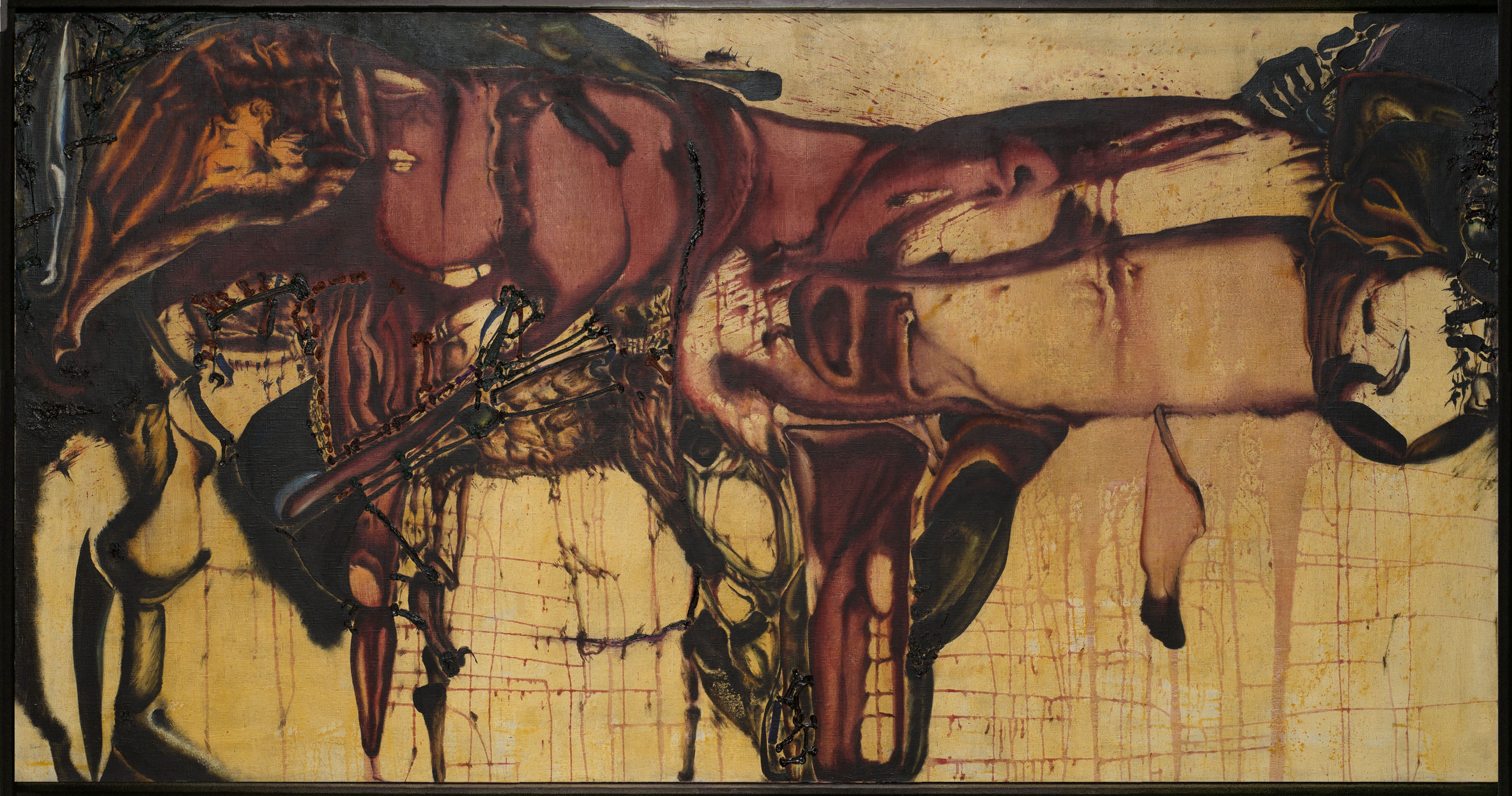
To interpret Brzozowski’s art constitutes quite a challenge, even for art historians or experts of the period. In the case of “Favours”, we are dealing with abstract, intertwining organic forms of irregular structure. Let us begin with the title which seems to be the most “specific” part of the painting. Regarding the artist’s peculiar attitude towards naming his works, he claimed that: “[…] title is artificial, but it’s always connected with the picture. It’s either the opposite of what it presents, or it says it straight. A title is something that (probably) relieves the seriousness of such paintings”. According to the definition of the Polish language dictionary, “fawor” means grace, favour, kindness, regards. Within the microworld of Brzozowski’s peculiar titles, we can also encounter “Reprimand” (“Reprymenda”), “Slipper” (“Meszt”, old-fashioned), “Sidewalk” (“Trotuar”). Therefore, it’s worth considering the relation between the aforementioned meanings and what is actually taking place in the picture.
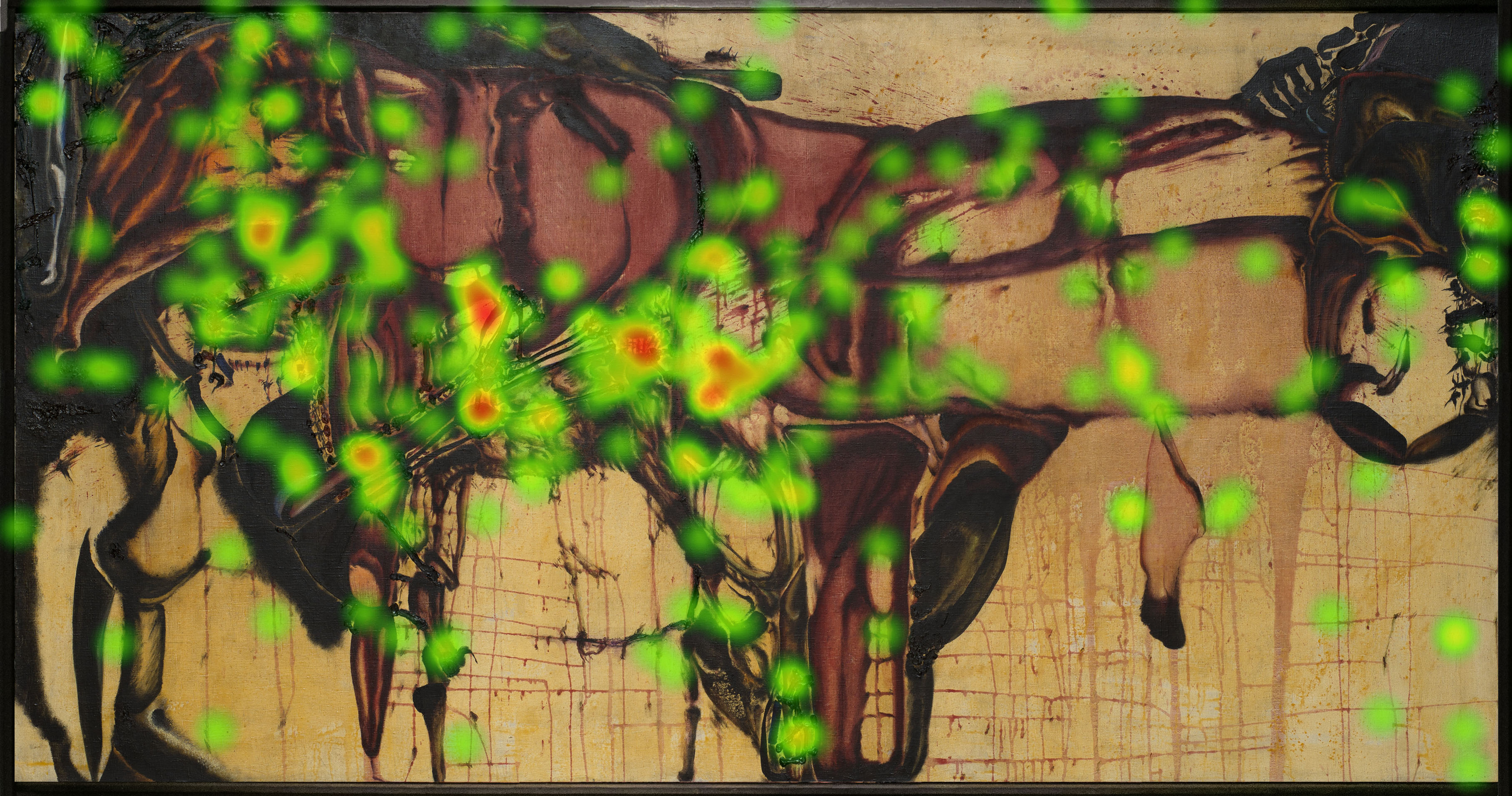
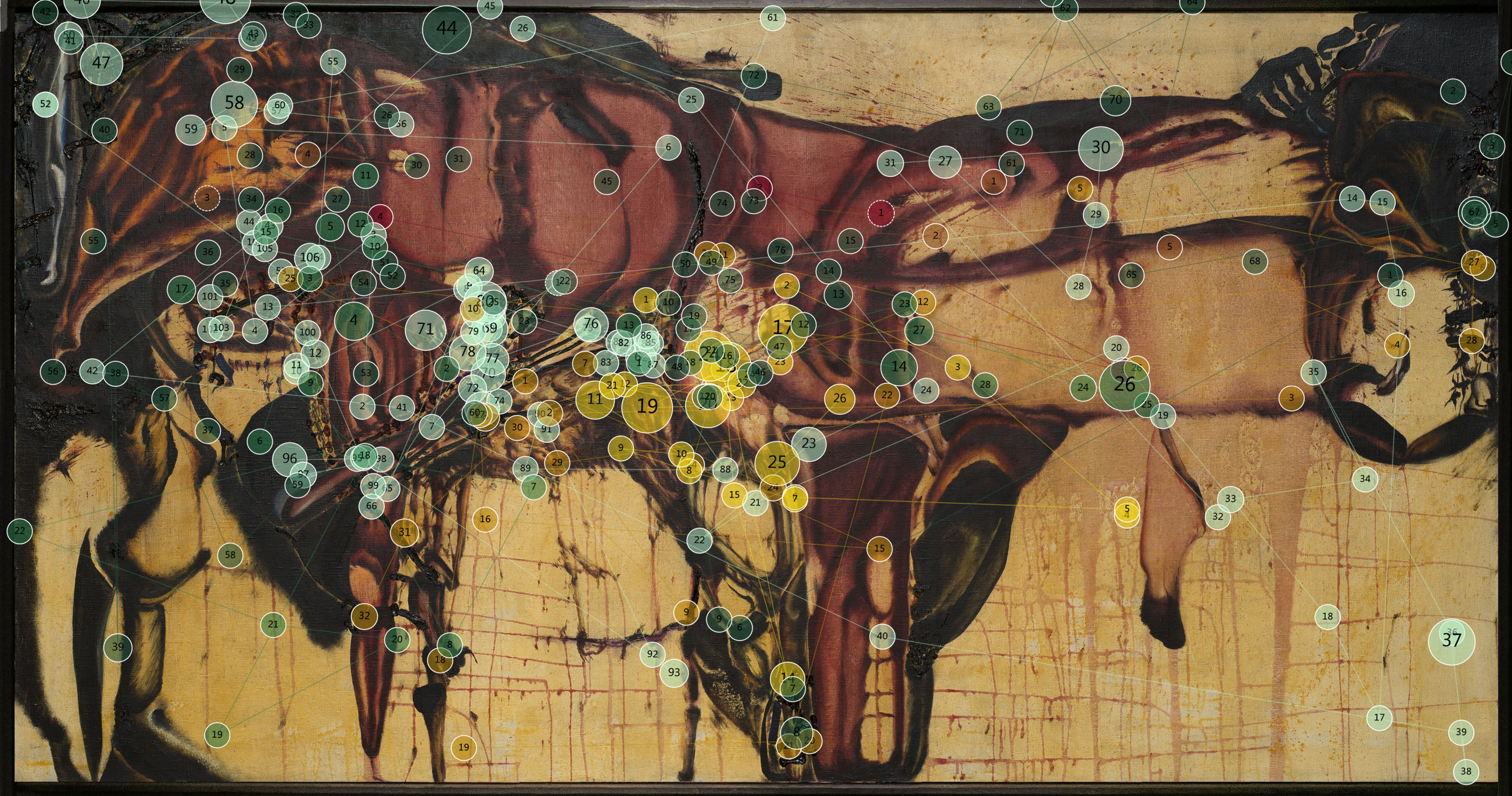
We can only guess what the details shown above present, but it’s worth noting that the most eye-catching elements are all distinguished by their almost relief texture and dark colours. It seems intriguing to ask: why in the work full of reds and oranges, it is the deep oily black which draws our attention? Perhaps the answer lies in the animalistic shape that is formed by the black, convex lines. It has been said that in Brzozowski’s paintings “everyone can see what they want to”.
Each of us looks at the picture in a different way!
Site map
- How to use the guide
- Andrzej Wróblewski “Shooting I, Execution”
- Stanisław Borysowski “K. B. Graphic”
- Tadeusz Dominik “Composition”
- Zbigniew Makowski “Still Life”
- Anna A. Güntner “High School Graduates”
- Zdzisław Beksiński “Untitled”
- Tadeusz Kantor “Multipart – An Umbrella”
- Tadeusz Brzozowski “Favours”
- Jonasz Stern “The Moment of Light”
- Łukasz Korolkiewicz “Dwellers of Sodom”
- Interviews
PROJECT REALISED AS PART OF THE KUYAVIAN-POMERANIAN VOIVODSHIP MARSHALL SCHOLARSHIP
content & graphic design: Łukasz Kędziora | art collection photographs: Krzysztof Deczyński | translation and proofreading by Martyna Kowalska

